50% discount for the first 100 vehicles: Only 10% service fee for one year. Register now!
Camping tips for beginners
, Apr 17, 2024, Reading time: 22 min
Reading time: 22 min
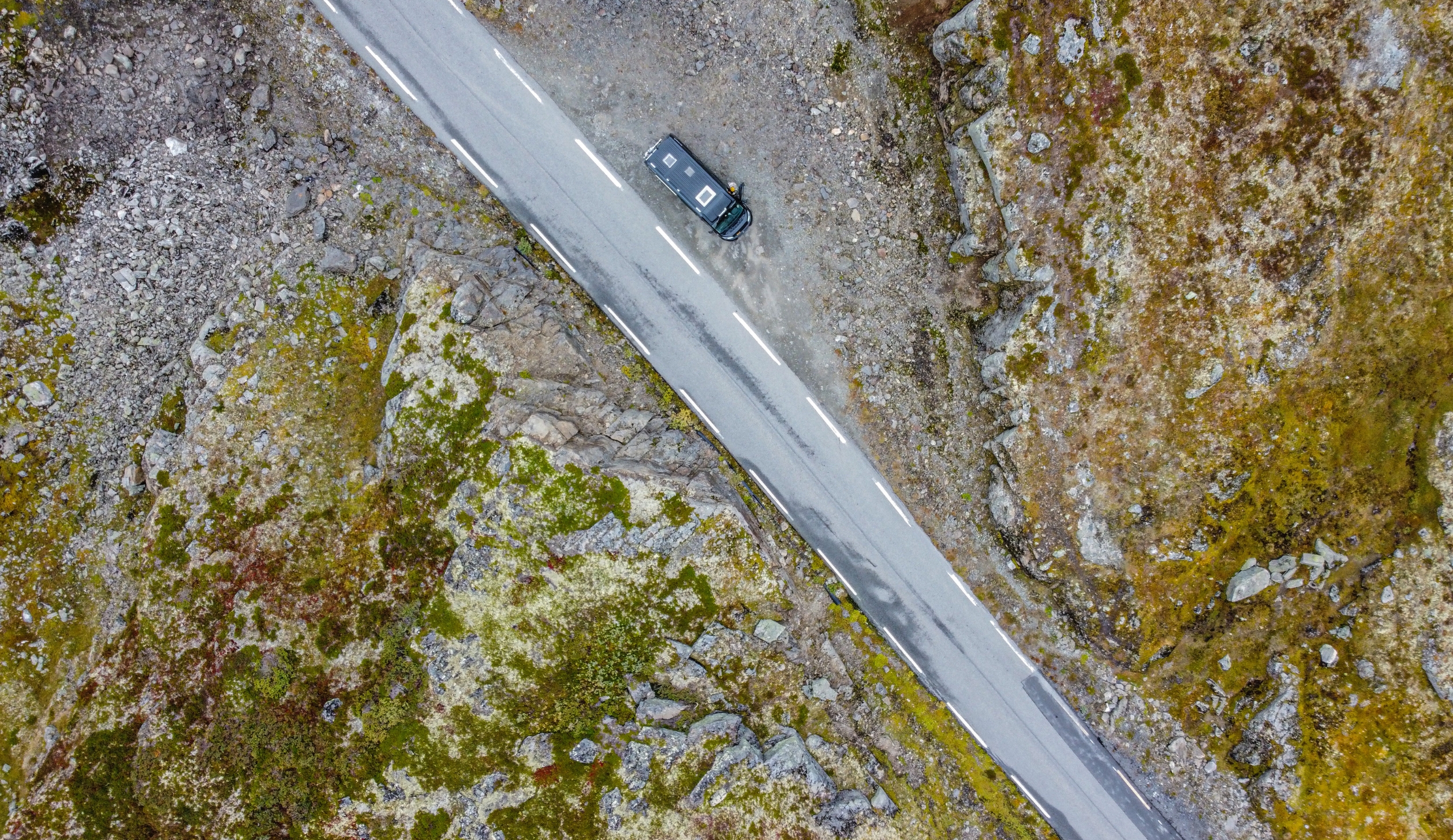
• • •
If you’re a newbie, the idea of traveling in a camper may seem like a daunting challenge at first. But with the right preparation and a few helpful tips, this type of travel becomes an unforgettable adventure. The feeling of freedom, flexibility, and the ability to wake up in a new place every day make camping a fascinating experience. Added to this is the closeness to nature, which you experience in a special way every day. Thus, you’ll feel a completely new connection to the wilderness after your trip.
In this article, you will find a variety of advice for your first camping trip – from choosing the vehicle and the necessary equipment to special camping equipment and important route planning and safety instructions. So don’t worry if you’ve never traveled in a camper before. Because with these tips for camper beginners, nothing can go wrong!
1. Information & tips for newbies to the camping world
As a newbie to the camping world, these tips will help you prepare for driving, choosing the right campsite, and planning your trip. If you follow these pieces of advice, your first camping trip will be an unforgettable memory.
Driving
Safe driving is fundamental for new campers (like for everyone). As usual, “Practice makes perfect”. Before the journey begins, you should familiarize yourself with the vehicle. This includes driving on different roads, practicing parking, and calculating distances. It is important to get used to the dimensions of the vehicle, such as the length, width, and height. In this way, you learn to take on tight curves, act safely when maneuvering, and steer the vehicle with confidence.
To succeed in this, you may very well rent your camping vehicle a few extra days before departure to get to know the vehicle in a calm and familiar area, for example by practicing parking in an empty store parking lot on Sundays and even driving a few kilometers on narrow streets. When the journey really begins, you will feel much safer.
Vehicle inspection before departure
This tip does not only apply to newbies to camping, but should be planned for every trip with a camper. You’ll find that with a little practice, the vehicle control will go faster every time. To avoid any unwanted surprises during your trip, start with a thorough inspection of the vehicle. Check the tires for pressure and condition, as well as the batteries, the operation of the electrical systems, and the water and gas supply.
Also, ensure that the first aid kit is complete and that the warning triangle and safety vests are available for all passengers. Perform a test drive to make sure everything is working as it should. Thorough preparation ensures that you encounter fewer unexpected problems and have a reliable vehicle. You will immediately feel that you will then set off on your trip with a much greater sense of confidence.

Weight and load
Correct weight distribution and optimal loading of the camper are crucial parts for safety and stability while driving. Pay attention to the permissible total weight of your vehicle and distribute the weight evenly. Avoid overloading by only bringing what you need. For even loading, think that heavy objects should be placed close to the floor of the vehicle so that the center of gravity is not too high. Not only does this prevent imbalance and an unpleasant driving experience, but it also increases safety while driving.
It is also important to secure the load. Heavy objects should be placed so that they cannot slide around. Ideally, you should use straps to secure them. Also, check that all cupboards are locked so that nothing can fall out. Although this does not pose an immediate danger, it can lead to unwanted distractions while driving.
Route planning
If you’ve already done a few camping trips, you know yourself and whether you mainly prefer spontaneous or well-planned trips. For your first trip, it is recommended that you plan your route carefully to overwhelm yourself with too many uncertain points. To get ideas and inspiration for your route, you can use special camping apps, travel guides, or maps that are tailored for motorhomes and provide information on suitable routes. We also have many articles with tips on magical places, depending on where you are going and your preferences.
Consider a reasonable travel time that you can see yourself driving in one go and plan breaks to avoid fatigue. As a guideline for a daily route, a maximum of 200 km is often recommended to have a relaxing trip and not spend too much time in the driver’s seat. Last but not least, you can search in advance for campsites along the route and check if they are accessible to campers and have the facilities you need. During high season, booking campsites is also recommended.
Water supply and wastewater management
During your camping trip, ensuring access to fresh water and draining waste water are fundamental aspects. These are simply basic processes that you need to plan at regular intervals. We recommend finding out in advance whether or not it’s possible to take care of this at your chosen campsite. You may also find special stations along the road, that provide the opportunity to fill up with fresh water and take care of waste water.
It is best to empty the waste water tank when filling up with fresh water, so that the waste water tank cannot overflow. Also, remember to stock up on food and refuel when you pass a suitable location. Then you avoid the “famous” (or rather infamous) panic hunger and the mood can be kept at its best.
Extra tips
Make sure you have the right attitude to your camping trip – one tip is a good dose of calm and not to worry if something doesn’t go as planned. Usually, it is the spontaneous changes that become the best memories. Be prepared from the start that flexibility will be your most important travel companion. Because if you are prepared that you will have to deal with unplanned obstacles – such as road closures, small repairs, or bad weather – then not much will upset you.
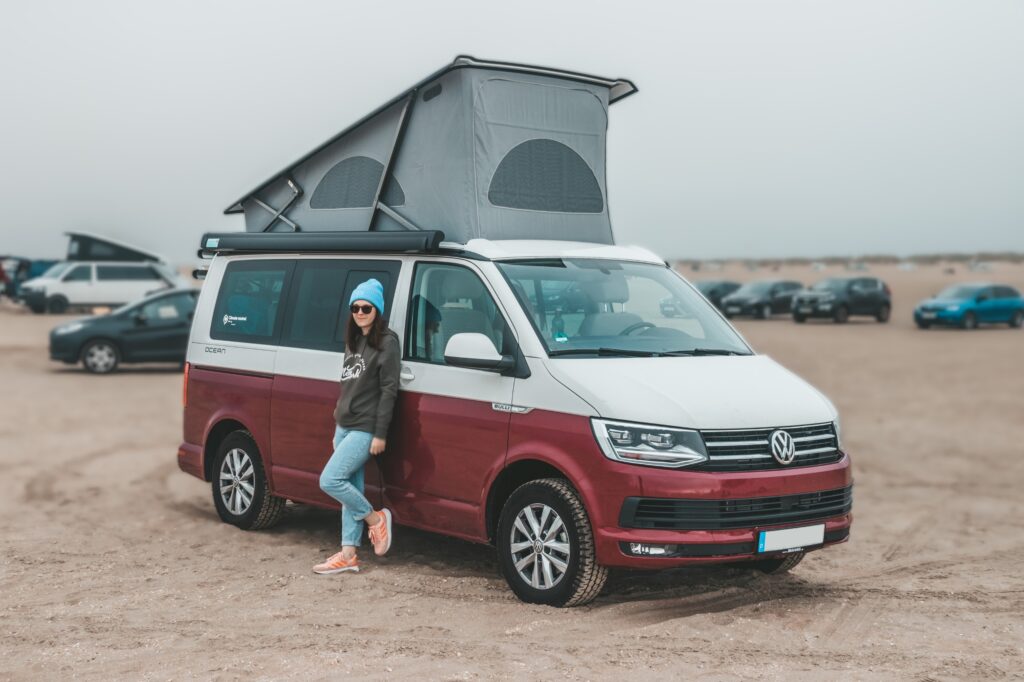
2. Rent camping vehicles at MyCamper
If you don’t have your own camping vehicle, it doesn’t mean you can’t go on a camping holiday. Quite the contrary, as there is a great solution: MyCamper. Here, you can rent a motorhome, caravan, or campervan nearby (or in another country to which to travel) and immediately set off on your road trip. Now, let’s explain to you in more detail how this works:
- When you’re looking for a camping vehicle, you can see where one can be booked in your area and when. You will find a large selection in Sweden, Switzerland, Finland, Norway, and Denmark. You can pick up your booked vehicle wherever you want – either close to your home or further away and start your road trip from here.
- Once you have found a suitable vehicle that meets your preferences, send a booking request to the owner. You’ll clarify all the details together and complete the booking.At the start of your trip, you collect your booked camper and get an introduction to it, including an explanation of all the important details when it is handed over. This is when your journey really begins!
- So that you can travel completely worry-free, you are fully insured during your camping trip, either through the owner’s vehicle insurance or through MyCamper’s insurance partner. You can find out which insurance cover is available for your chosen motorhome directly on the respective vehicle profile at MyCamper before you book. As soon as your trip begins, the insurance cover comes into effect automatically. You can find any additional information on insurance here.
- If you’ve never gone camping before, you may not be entirely sure if this type of vacation is for you. In that case, it is smart to start by planning a shorter weekend trip with the camper. You can rent it from MyCamper for just a few days. This is the perfect way to get a feel for it and get started with camping life, before setting off on a several-week camping holiday.
So what are you waiting for? Plan your camping holiday now and rent your camping vehicle at MyCamper.
Rent the perfect camping vehicle for you and start your own camping trip.
Rent a motorhomeRent a campervanRent a caravan
3. The perfect camping packing list
A carefully compiled packing list is essential for a successful camping trip. It serves as a handy tool to make sure you don’t forget anything important and that your trip goes smoothly. The ideal camping packing list includes basic personal items such as clothing, toiletries, and medicines, but also specific ones for the camping vehicle, such as special camping equipment, tools, cooking utensils, maps, and vehicle equipment.
If you use a packing list to plan your trip, you will immediately see several benefits. Firstly, as said, it helps you not to forget anything important, by acting as a memory aid. Secondly, it enables efficient planning by giving you a clear overview of the items you need and allows you to prioritize things. Thirdly, it promotes organization when packing, which saves time and reduces stress. You can also use the packing list to check that everything is under control and with you before you go: tick off what’s in the camping vehicle, and if everything is marked with a small tick, you’re ready to go!

4. Everyday life at the campsite
As a newcomer to the campsite, you are probably thinking about everyday life at the campsite and “how to fit in”. You can rest easy, because with a few little tricks and tips, you will adapt perfectly to camping life. From rules and regulations at a campsite to taking care of shared facilities – it is not at all difficult to get life going as it should here. As long as you are aware of these “codes”, your stay will be nice and pleasant. If you know how best to behave at the campsite, you won’t have any problems with other guests and you can also protect nature. Now, let’s take a closer look at this.
Campsite rules
Campsite rules are regulations that often specify quiet times, waste sorting guidelines, speed limits on the facility, rules about campfires or the use of barbecue pits, pet policies, and rules about the use of musical instruments or speakers. You will also find information on how to use the sanitary facilities, check-in and check-out times, and how to observe safety measures.
Each campsite sets its own rules and regulations and usually makes these available to its guests in several ways. Many campsites publish their rules on their website. There you will usually find a section with visitor information that specifically contains rules, regulations, and guidelines for behavior on site. Sometimes, you receive information material when you arrive at the campsite, which also contains the campsite’s rules. The staff at the reception can also give you information about the rules. In addition, there may be signs describing the rules in central parts of the campsite, such as sanitary areas, common areas, or at the entrance.
Neighbors
With respect and consideration take you far on the campsite – that’s how you can benefit from a harmonious coexistence. Then, you can counteract any problems before they can even arise. The first tip concerns the arrival at your pitch. When parking your camper, it is important to keep a good distance to other vehicles and not block traffic lanes. This makes the campsite a better one for all campers.
Afterward, a short introduction of you with a friendly greeting and some small talk helps to create a pleasant atmosphere. You can even get useful information about the campsite and tips for excursions in the area from your neighbors.
However, it cannot be overlooked that differences of opinion or conflicts may arise. Then, it is important to be calm and respectful. Open communication and finding fair solutions will help you overcome problems. Once the differences are resolved, everyone can get back to the beautiful side of camping life.
Nature conservation
Responsible use of resources and respect for nature are the basis for sustainable camping. If you make sure to use water and electricity sustainably, this will help save resources. For some time now, there have been particularly environmentally friendly dishwashing detergents and shower creams that are particularly good for taking care of the environment. In some countries, a functioning sewage system is not a given, and then it is important to do what you can to remove pollution before the waste is returned to nature.
Another way to protect nature is to avoid waste as much as possible and, when it arises, dispose it properly. Many campsites have large containers for different types of rubbish. So make sure to sort your rubbish in the appropriate place. Reducing noise also plays an important part in good campsite behavior, especially at forest campsites, so as not to disturb wildlife. Maybe then you will even be lucky enough to see a wild animal in the vicinity of your camper. If you follow these simple tips, we can preserve the beauty of nature and take care of it for future generations.
Common areas
At a campsite, various common facilities make your stay more comfortable. This includes sanitary facilities such as toilets, showers, and washing places, often also equipped with washing machines and dryers for laundry. There are often communal kitchens with hobs, microwaves, fridges, and sometimes even kitchen utensils that you can use on-site. In addition, there are sometimes lounges with tables and chairs, as well as libraries or playgrounds. This also includes barbecue areas for communal eating, exercise areas such as swimming pools or playgrounds, and final disposal stations for waste and sewage.
The use of these common facilities at the campsite requires respect and consideration. This means that sanitary facilities such as showers, toilets, and washrooms must be maintained and left clean so that they are comfortable for all campers to use. Of course, it is also important to respect the privacy of others. If all the sinks are occupied, for example, you can just go for a walk instead of waiting at the sink – this can be perceived as unpleasant by some people. Adhering to rules and opening hours and leaving the common kitchen clean also contribute to a smooth and pleasant coexistence.
Security
When it comes to camping safety, there are a few other aspects you should consider. Potential problems can arise from uneven or unstable surfaces, which is why it’s important to have a safe place to park your camper.
In addition, unexpected weather conditions, such as strong wind or heavy rain, can affect safety. Before leaving your vehicle, always ensure that the windows are closed and that your camping equipment is stowed away in a wind and weather-resistant manner. This also includes, for example, retracting the awning before you set off on an excursion. This can quickly be damaged by wind, which means you will have expensive repair costs afterward. In addition, a gust of wind is enough to turn the awning into a flying hazard.
Remember to always lock your motorhome and the storage compartments on the outside of the motorhome when you are away. Incidentally, being a good neighbor also brings with it certain advantages. Although crime on campsites may not be that common, it’s still a nice feeling to know that you as camping guests look out for each other – neighborliness, quite simply.
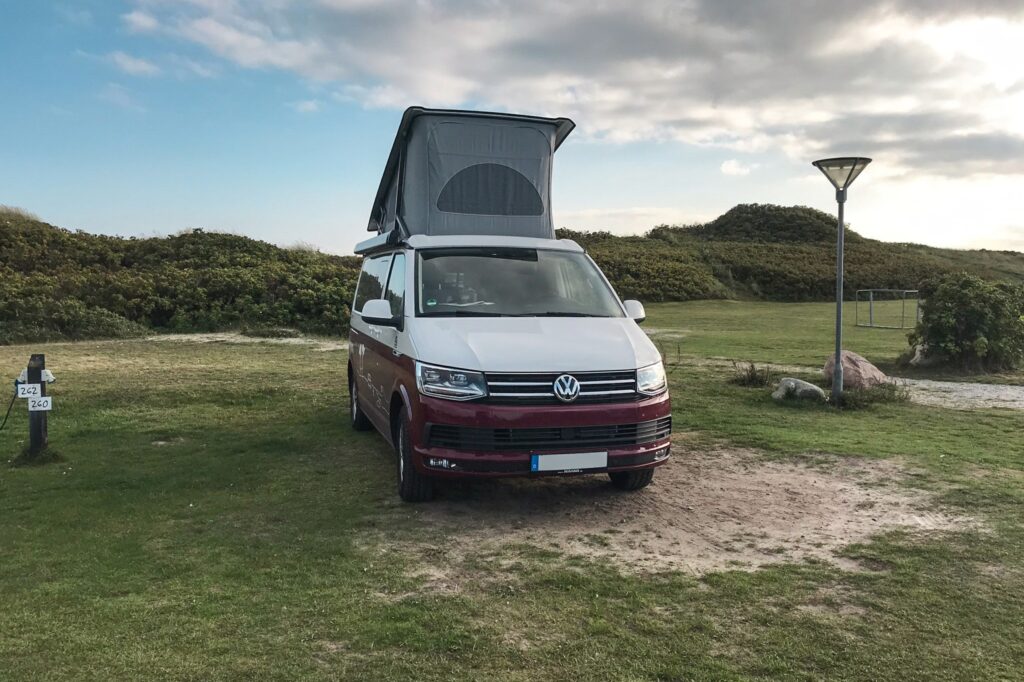
5. Which vehicle is best for me?
Nowadays, there is a really large selection of camping vehicles. To ensure that you choose the right type and model of a camper, you should consider various factors. Different models offer different advantages and are suitable for different types of travelers. Here, you will find an overview of some of the top models and which they are best suited for.
Campervan/Van
These compact models are ideal for solo travelers or couples who value greater mobility and maneuverability. They are easy to drive and are good for city trips or trips on narrow roads. However, the limited size means less space for larger families or longer trips, although it’s really worth mentioning that some models are cleverly planned in terms of space and maximizing the given space. If you are new to camping, traveling alone, or want to travel smoothly as a couple, you may very well consider this vehicle model.
Semi-integrated motorhome
In this model, the driver’s cab is partially integrated into the living room, which means that the driver’s and passenger’s seats can be turned and then usually complement the seating area in the dining room.
Semi-integrated motorhomes offer a comfortable travel experience for couples or small families. They are compact and have a living area and a separate driver’s cabin. This enables a comfortable transition between the vehicle and the living space. They often provide an increased sense of space through the area above the cab, providing extra storage space, which can also double as a bed. These models are ideal for longer journeys, offer more comfort than a van or motorhome, and strike a good balance between size, living comfort, and driving comfort. They are therefore well suited for travelers who want to travel with a certain degree of luxury and comfort.
Fully integrated motorhome
With a fully integrated motorhome, there is no typical driver’s cab, but rather the entire vehicle is designed specifically for its function as a camping vehicle. They are characterized by their unified body, where the living room and the driver’s cab are seamlessly connected. Some models do not have a passenger door, so boarding is always done through the side door.
This consistent design offers maximum living comfort. These vehicles are often designed to be more spacious, providing extra space for sleeping and living, and for kitchen areas. Fully integrated models are often luxurious and high quality. The raised design often enables larger panoramic windows and thus better visibility. Thanks to its size, you have plenty of storage space and can truly get the feeling of having a “home on wheels” with plenty of space. However, due to their dimensions, you should be skilled in maneuvering them.
Motorhome with alcove
With a sleeping area mounted above the driver’s cab, alcove motorhomes offer additional sleeping and storage space. They are suitable for families with children or two couples, for example. These models often offer a lot of space, but due to their construction, they can be less aerodynamic and therefore have higher fuel consumption.
4×4 motorhome/off-road motorhome
These models are designed for travelers who love adventure and want to explore remote locations and difficult terrain. With more robust features and off-road capability, they are optimal for outdoor enthusiasts. This allows you to go on expeditions off the main roads. However, due to its clear adventure focus, this motorhome model may not be as comfortable or spacious as the other models. But, as a couple or a family with a child, you will get enough space if your priority is off-road driving and outdoor life.
Rent the perfect camping vehicle for you and start your own camping trip.
Rent a motorhomeRent a campervanRent a caravan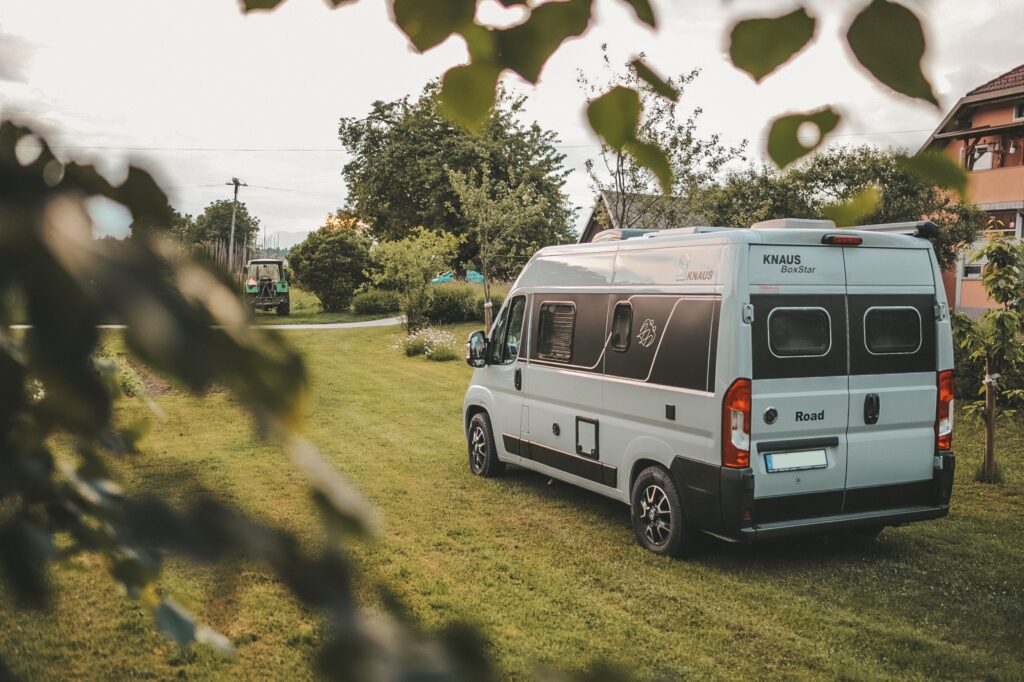
Did you know that…
You don’t have to camp at campsites, as you can also spend the night in the middle of nature. This is called wild camping, and you can find out everything you need to know about this and what the legal situation is in different European countries in this article.
6. Tips for camping gear and accessories
There are useful accessories for a camping trip that are often already installed in the motorhome. Now, we’re going to dive into how these gadgets work and what benefits they provide.
Camping toilet
Most mobile homes have chemical toilets installed, which at first glance resemble a regular toilet. However, they have a waste tank that is accessible from the outside of the motorhome. A chemical pack is added to this tank after each cleaning, which then breaks down the residue as much as possible and counteracts odors.
When visiting the toilet, the latch to the waste tank must be closed. You only open this during the flushing process so that the flushing water flushes the waste down into the tank. After a few uses, the tank’s level will increase, which you should keep an eye on using a display.
Do not let the tank get too full and clean it only at specially designated disposal sites for chemical toilets. If you have never used a camping toilet before, you can of course ask for a short introduction when you pick up your camping vehicle.
Extra tip:
There is now a wide range of options for camping toilets. In addition to dry separation toilets, you will also find compost toilets or electric systems with hacking or welding systems.
Auxiliary heater
To be able to use the auxiliary heater in a mobile home, there is usually a control panel in the vehicle. Select the desired temperature and start heating. It uses diesel, gas, or electricity to generate heat. The auxiliary heater heats the camper’s interior even when the engine is not running. This means that you can achieve a comfortable temperature in your motorhome, especially during the colder seasons. You can also ask for an explanation about the use of the auxiliary heater when you pick up your motorhome.
(Portable) solar module
Some campers already have solar panels on the roof or are equipped with portable solar panels that convert sunlight into electrical energy. They consist of solar cells that absorb sunlight and convert it into direct current. These modules are light, mobile, and easy to transport. By connecting to a charge controller and a battery, they store the energy generated for later use. With this practical gadget, you can use an independent power source in the motorhome. If you do not have external power available in remote locations, solar panels are an ideal solution. This allows you to charge electronic devices and support the RV’s energy needs when the sun is shining.
Camping kitchen
When it comes to camping stoves, campers have a variety of models available that vary according to their needs and preferences. A popular model is the compact gas stove, which is easy to transport and suitable for a variety of dishes. Some stoves also use other fuels such as gasoline or alcohol, which can be especially beneficial in remote areas where gas is hard to access. The best way to find out which model suits you best is to find out more about the individual models and preferably test two different ones.
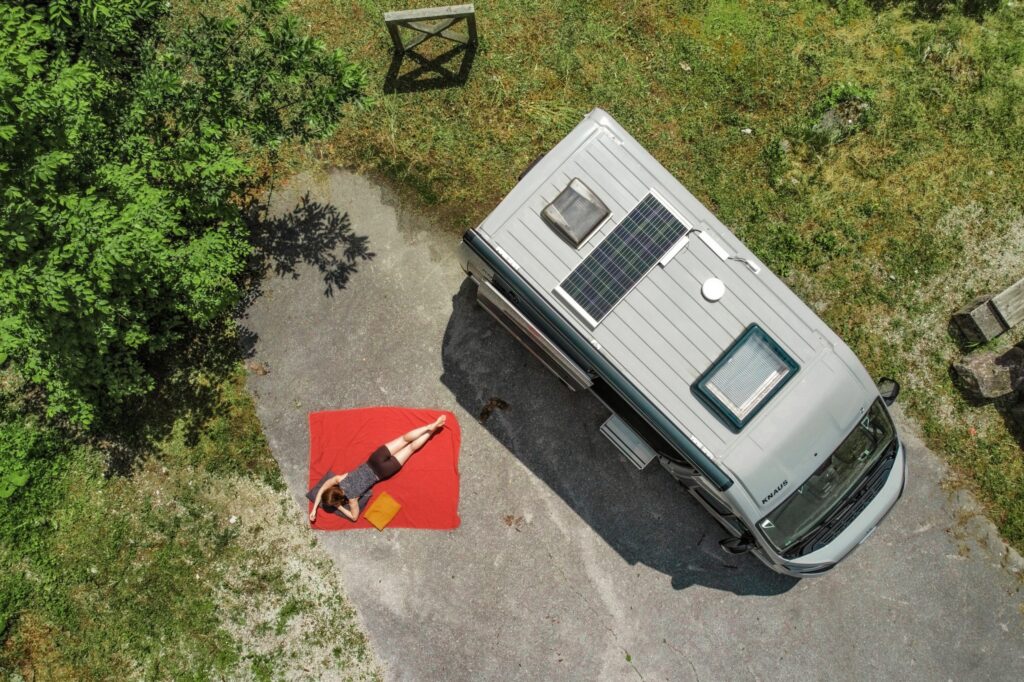
Good to know
As we covered earlier in the article, you can find suggestions on good routes, as well as additional tips and inspiration, for your camping trip in Denmark, Norway, Sweden, Finland, and Germany.
7. Checklist for your travel planning
Finally, we’ll give you a checklist with the most important points for your first camping trip with your camper. This comes in handy, as you might not really know where to start when planning your trip as a newcomer. If you follow this list and check off point by point, then you’re on the safe side. You can do points 1 to 5 a few months in advance. With that said, we wish you a fantastic trip with many memorable moments!
- Select destination: Find out the places you would like to travel to and finally decide on a destination.
- Rent a camping vehicle: Make a reservation with the desired travel time and duration.
- Route planning: Pan a rough route that includes suitable distances to drive.
- Additional bookings: Start looking for nice campsites along your route now and pre-book them during high season. Do you need a ferry to reach your destination? Then you must book this as well. Do you fly to your destination and pick up the camper there? Then you should book flights now.
- Travel documents: Make sure your driver’s license, vehicle registration documents, insurance documents, and other relevant documents are ready.
- Check the packing list: Do you already have all the stuff on your packing list at home or do you still need to do some shopping?
- Let’s go! With the final packing completed, according to the packing list, the last step is completed and your trip begins. Now, all you have to do is to enjoy!
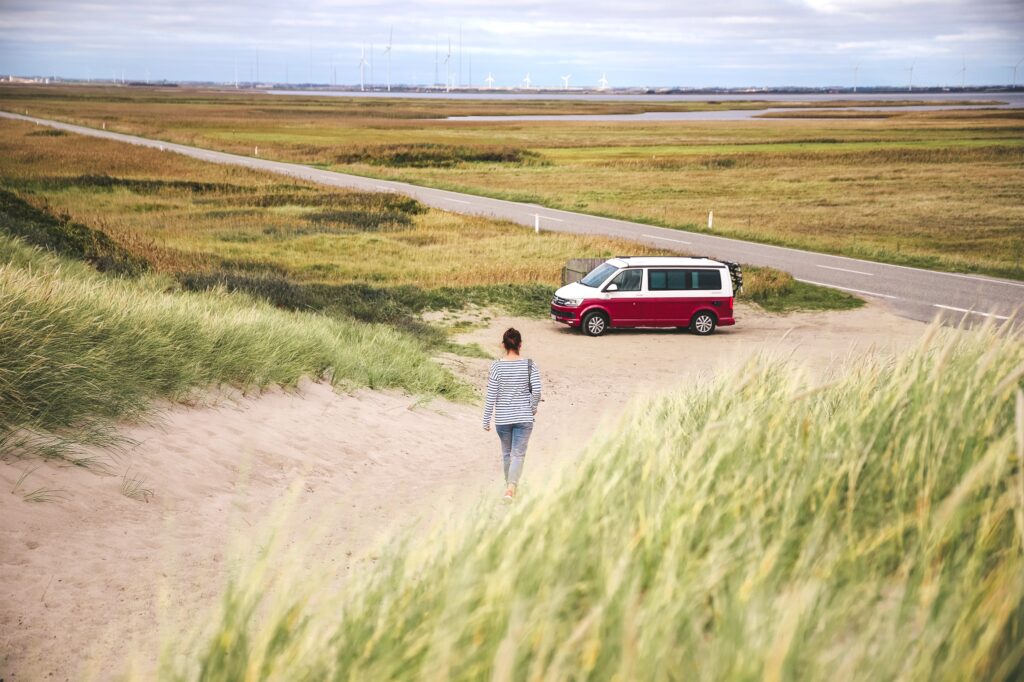
Newest articles
No articles found